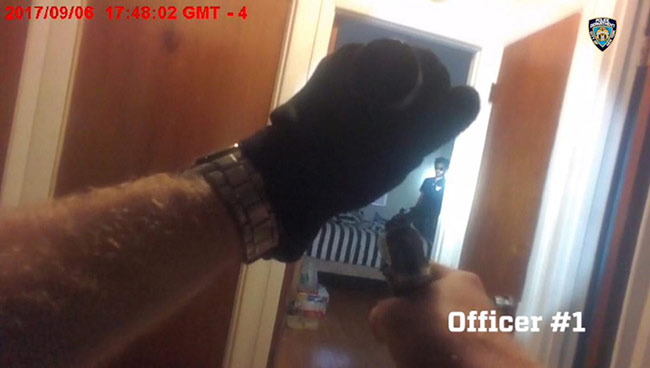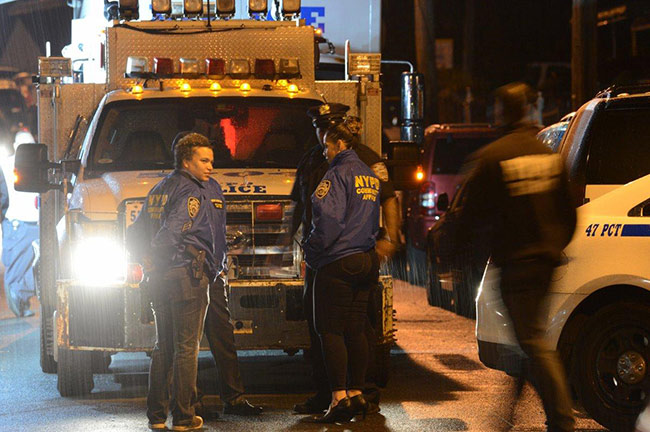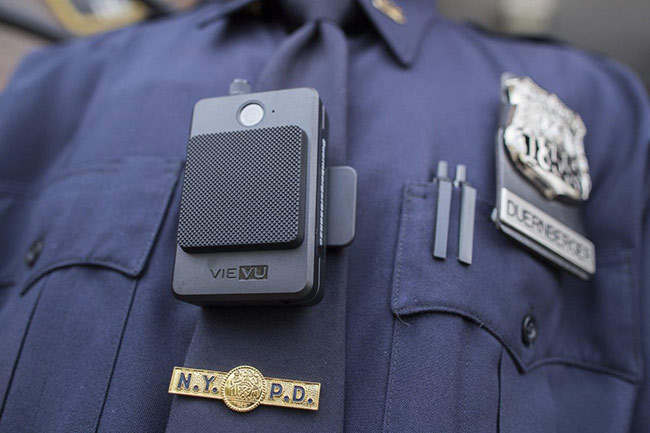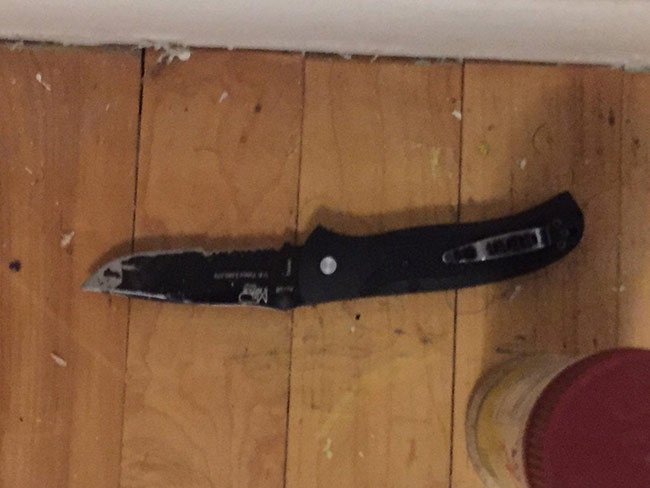





Body camera footage released by the NYPD shows the events leading to the shooting death of Miguel Richards on Sept. 6. (NYPD)
The NYPD on Thursday released body camera footage showing the confrontation earlier this month that led to police fatally shooting a Bronx man.
A 16-minute video compilation of footage from four officers’ body cameras screened for reporters showed cops repeatedly telling Miguel Richards, 31, to drop the knife he was holding in his Edenwald apartment on Sept. 6.
At one point Officer Mark Fleming tells Richards, “Put that knife on the floor or this isn’t going to end well for you. Put that knife on the floor.”
At another point he tells Richards, “Drop your weapon. You’re about a second from getting shot.”
Richards does not say a word during the entire sequence of events, which includes his landlord and two friends imploring him to cooperate with police.
The video compilation ended as police opened fire and does not show Richards' dead body.
Police were set to release a much longer 49-minute excerpt after screening the compilation. The full encounter stretched for more than an hour.
Cops say Richards aimed what turned out to be a toy gun with a laser pointer on it at police and officers fired 16 shots at him.

Police investigate the crime scene where Miguel Richards was fatally shot by police on Sept. 6. (ANDREW SAVULICH/NEW YORK DAILY NEWS)
Explaining his decision to release the video, Police Commissioner James O’Neill said in a message to the rank-and-file transparency is key to building public trust.
“Transparency is one of the many ways this department can continue to keep and build on the trust each of you has worked so hard to earn from members of the community all across our city,” he said.
“In the vast majority of these cases, we believe that body-worn camera video will confirm the tremendous restraint exhibited by our officers.”
O’Neill called the decision “clearly precedent setting,” but said footage in the future will be released on a “strict case-by-case” basis.
The release of the video comes over the objections of Bronx District Attorney Darcel Clark. "Transparency is critical to building trust between community and law enforcement. Notwithstanding, I still have an obligation to protect the integrity of the investigation into this shooting," Clark said Wednesday.
"Releasing videos to the public during the early stages of an investigation may resolve some questions about the incident, but it may compromise the integrity of the investigation."
Clark said she believes the footage should be released after the investigation is completed. Richards' family has already seen the footage, sources said.

The fatal shooting was the first recorded by a police bodycamera since the NYPD started equipping cops with the technology. (MARY ALTAFFER/AP)
Patrick Lynch, the head of the Patrolmen’s Benevolent Association, slammed the release of the footage, saying it sets a “dangerous precedent.”
"The district attorney's investigation into the case is still ongoing — it should be allowed to proceed free of pressure and interference, looking at all of the relevant facts alongside the video footage,” he said in a statement.
Lynch argued that the footage is a “confidential personnel record,” protected under Section 50-a of the state Civil Rights Law.
“Releasing it in violation of the law will expose the police officers involved to a very real and substantial risk of harassment, reprisals and threats to their safety and the safety of their families,” he said.
“If fairness and justice are the goal, they won't be achieved by suspending police officers' rights whenever it is convenient to do so.”
The NYPD has been struggling with how it will handle body camera footage in the future.
Police officials say they feel constrained by Section 50-a, which makes personnel records of police officers confidential.

The video shows cops repeatedly telling Richards to drop a knife he was holding.
The city has interpreted the law to bar release of any information about police disciplinary cases, including a basic summary of what happened.
The de Blasio administration and Police Commissioner James O’Neill have taken this position even though departmental trials of police officers are open to the public.
This contradiction means that a person can watch an entire trial but never know what the outcome was.
Civil rights lawyers say the city is misinterpreting the law to define the ban on disclosure as broadly as possible.
Mayor de Blasio pledged in October to try to get the state Legislature to change the law, but critics have been skeptical about his ardor to do so.
He claimed Republican opposition to a change in the state Senate blocked any changes from being realistic.
The state’s highest court is slated to take up the matter later this year.